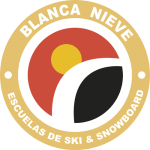Snowshoeing
Not many people venture out on snowshoes in the national park but it’s really easy. Read our guide to snowshoeing to find out more information!
We suggest that you familiarise yourself with your “new shoes” (the snowshoes) at the ski resort.
The most important aspect is to familiarise yourself with the straps or fastenings to your footwear, which may be normal hiking boots.
Steps to Snowshoeing
Follow these simple steps from our snowshoeing guide to ensure you have the right fit at all times. Place the tip of your foot over the top of the hinge, centred on the snowshoe. Your toes should be hanging over the front of the foot platform.
Tighten the front strap first, then the heel strap and finish by tightening the strap over your instep. The straps do not need to be too tight. Just make sure they’re snug – it’s easy!
Technique
The most important thing to remember is to keep your natural stride. Don’t try to modify or exaggerate your stride.
Walking or running should feel natural, and in either case, the terrain will precept your stride. You will find it easier to learn on a gentle, flat or rolling terrain, but the steeper and deeper the terrain, the more difficult and intense your walk or run will be. Another point to remember when you start snowshoeing is that your snowshoes have a larger “footprint” in the snow than you are probably used to.
You may feel uncomfortable for a few hundred steps, but soon your slightly wider stance will feel natural. The solution is simply to concentrate on spreading your feet a little wider apart along your stride. This will help you avoid hitting the snowshoe racks and possibly tripping.
Tips to keep in mind
Remember to lift your knees, adopt a wider stance and avoid shuffling your feet to prevent the crampons from sticking to the firm snow. Using snowshoeing poles will make all these things come together on their own.
Uphill/downhill/traversing
When manoeuvring on steep slopes, the good technique involves aggressive use of the front crampons.
Lift your knees and dig the front crampon points into the snow. Remember, the fastest way to the top is up, but a more practical method is to cross the slope diagonally. When walking downhill, avoid leaning backwards over the tails of your snowshoes whenever possible. Try to keep your weight upright and over the centre of the snowshoe, and let the front crampons (located under the toe) grip the snow to prevent slipping.
When traversing slopes, stay upright and lean into the hill with each step. Support your weight forward.
Keep steps short and even, and use poles, which will help prevent slipping and ensure safety.
Deep snow
Lift your knees and shorten your stride. Your snowshoes are not designed to float completely on the snow, so you will find that you sink a little with each step. When there is a lot of snow, it is important to tread lightly and pace yourself.
Intensity
The level of intensity of snowshoeing is infinitely variable. From a slow walk, you can increase the intensity by going faster, running, using poles, climbing and/or traversing deeper and softer snow. The ease with which you can change the intensity level of snowshoeing is one of the keys to its great value for fun and as an exercise option.
At a minimum, snowshoeing will be slightly more intense than walking or running at any pace or level due to the cold, the weight of the snowshoes, the resistance of the snow, etc.
Safety
Snowshoeing is an extremely safe sport. It is also one of the only specific winter sports that does not rely on sliding or speed. The manoeuvrable nature of modern snowshoes and the soft, forgiving nature of the snow combine to make the risk of injury while snowshoeing is very low. Snowshoeing involves a natural movement similar to walking, which the body is used to, and is a very low impact due to the cushioning of the snow. Any outdoor activity in winter has its risks and snowshoeing is no exception.
Be careful to avoid the following hazards: Thin ice: do not walk on frozen water unless you are sure of your safety. Even after a long freeze, a body of water may have thin patches. Be careful! Walk lightly!
Getting lost
You can usually follow your tracks, but watch out for storms and wind that can obscure them in the wilderness. Always let someone know where you are and when you expect to return.
Wildlife
Keep your distance and respect your environment – the creatures out there in winter have a hard time! These are natural spaces
Waterproof gloves or mittens and thick walking socks will keep your feet warm, and a mask or balaclava to protect you from the cold if necessary.
Does keeping yourself warm mean keeping your body dry? Dress appropriately for your outdoor route with underwear as a top clothes. Wearing a wet cotton T-shirt outside in the winter can be as cold as falling into freezing water.
Know your limits, stay hydrated and wear extra layers on long outings.
Altitude sickness
Higher elevations may have better snow, but carry the risk of altitude sickness. Stay within your limits, stay well hydrated and ascend gradually.
Avalanches
Familiarise yourself with the terrain and potential hazards before setting off. If you have any questions about this snowshoeing guide call us and we will assist you.
Don’t hesitate to contact us for more information!
